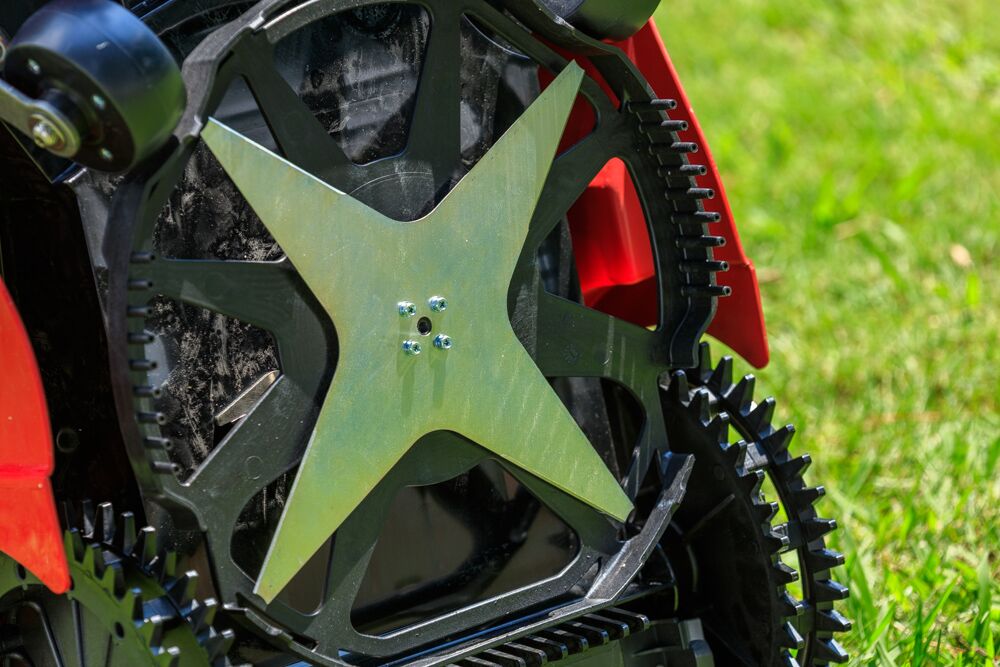Have you planned to get a robot lawnmower but are still unsure how they work? That’s interesting because these are real machines that you’ll enjoy having around, especially if you are a busy person but like maintaining your lawn. So, how do robot lawnmowers work? Are they worth it? That is what we shall discuss in this article.
What is a Robot Lawn Mower?
Before we discuss how these bad boys work, it is best if we first find out what they are. So, what exactly is a robot lawnmower? A robot lawn mower cuts the grass on your lawn without being held. Like the common robotic vacuum cleaner, they are advanced and make your work less time-consuming.
These self-driving roving mowers employ cutting-edge technology that keeps your grass mowed regularly with little effort.
How Do Robot Lawn Mowers Work?
a). Chassis and Wheels
Because robotic lawn mowers have a low center of gravity, they can often tackle steep grades without tipping over. The motor’s power operating the wheels may limit cheaper models, but more expensive models can handle slopes of 25 degrees.

Image: Mibrobo
Robot lawn mower wheels are engineered to have minimum impact on the grass beneath them. However, because robot lawn mowers are regularly used, the wheels must not create excessive wear or create tracks in the grass that would detract from the appearance of the grass.
Robot lawn mowers’ chassis typically have little ground clearance, and the blades are hidden well beneath the mower, reducing the chance of harm.
Without the tilt and lift sensors onboard activating the automatic stop, it is impossible to access the rotating blades under the chassis, either intentionally or accidentally. Robot lawnmowers are thus the safest solution for cutting your grass.
b). The Cutting System
Manual lawn mowers and robot mowers use quite different cutting technology. Manual lawn mowers are wasteful in energy use and employ high-powered cutting blades to let you cut your lawn swiftly and efficiently.

Image: The robot lady’s blog
Robot lawnmowers have significantly smaller cutting blades and move much slower than manual mowers, cutting a far smaller quantity of grass each minute. A robotic lawnmower has two main cutting systems. These include;
i). A revolving disc with several freely rotating cutting blades. The blades are often very small, similar to razor blades in size. These mowers have a small cutting diameter, but they are the quietest.
ii). Solid cutting blades, used singly or in groups to improve the cutting breadth and thus the rate at which your grass is mowed. The disadvantage is that they are louder and consume more power, necessitating either a bigger battery or a trade-off between battery capacity and working time for the same cutting time.
Robot lawnmowers generally have sharp blades that slice through grass blades. This contrasts with conventional rotary mowers, which knock the tops off the blades. In addition, sharp blades cause significantly less damage to the growing grass and ensure that the grass recovers quickly after being cut.
c). Boundary Detection
Robot mowers currently use a perimeter wire to detect the lawn’s boundary properly. This must be laid along the perimeter of your lawn before using your mower for the first time. It requires 1-2 hours to set up correctly, but it will be invisible as the grass grows over it. Additionally, you can lay the boundary wire down to 20cm underground, and it will remain hidden.
What are the Safety Features of Robotic Lawn Mowers?
If you want to get a robot mower but still wondering whether or not they are safe, this section is for you. A robotic mower is designed with safety features to keep you, your pets and your young ones safe. First, let us go through the safety features of robot mowers.
a). Accelerometers
A soft front bumper and one or more accelerometers attached to the mower’s exterior shell are used by some robotic mowers. When an impact occurs, accelerometers detect impediments, and peaks in the accelerometer readings are used to determine contact.
b). Floating Shell
Some robot mowers use a floating shell encircling the mower chassis that becomes displaced whenever an obstruction is detected. They can also use a Hall Effect sensor that senses shell movement instead of accelerometers.
c). Lift Sensor
Robot mowers are fitted with a lift sensor that activates the emergency stop when wheels lose contact with the ground. This can be due to someone lifting the mower or when the mower gets stuck and tilted.
This feature is especially important for those with curious kids and pets.
d). Tilt Sensors
The tilt sensor works in tandem with the lift sensor to prohibit access to the cutting blades when in use. In addition, the emergency stop is engaged, and the blades stop quickly if the mower is tilted beyond a certain angle.
This is handy when the robot mower’s wheels are in contact with the ground or another object, but the cutting blades are at risk of being exposed.
e). Perimeter Wire
As already discussed above, a perimeter wire keeps your mower working only within the confines of the boundary. Most robot mowers will detect the wire and know the boundary. This prevents them from ruining your flower beds or bumping into other things on the driveway or patio.
f). Child Safety
Robotic mowers are designed with numerous safety features. However, leaving kids with the mower in motion unsupervised is still not advisable. They can still try to reach underneath the mower and get cut by the stationary blades once an emergency stop has been activated.









